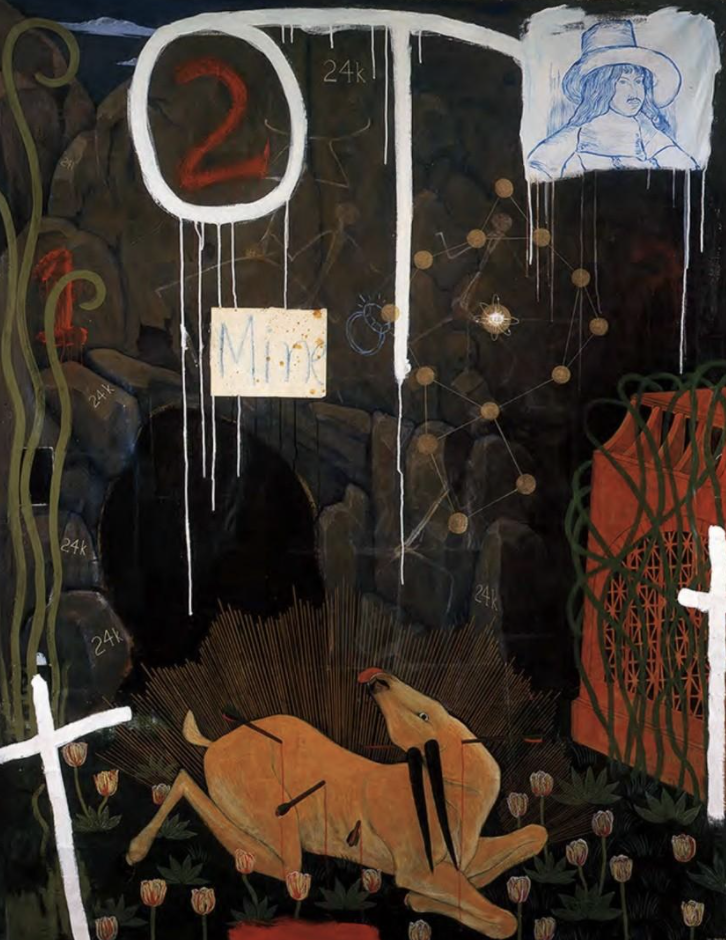Kerry James Marshall, American, born 1955
The Land That Time Forgot, 1962
From the works that I have observed thus far, I noticed that the bold use of color and scale are techniques that can invigorate an artwork’s meaning, surfacing strong emotions of intimidation, fear, and pain and making the question of systematic oppression unavoidable. For example, Marshall’s The Land that Time Forgot zeroes in on emphatic themes of imperialism, industry, and ecological devastation. I find that Marshall’s work is able to tug on both ends of the ecological spectrum, as he shows both biological and psychological environmental torment in his painting. A South African springbok (country’s national symbol) in the center is pierced with arrows, and lies dying surrounded by unmistakable emblems of European occupation: Christian crucifixes, the portrait of the Dutch founder of Cape Town, and allusions to the mining ventures that fueled Apartheid (Braddock & Kusserow 371). The emblems seem haphazardly thrown up on the canvas, as if to suggest that it was graffitied by the European oppressors themselves. Label by Tara Vasanth

